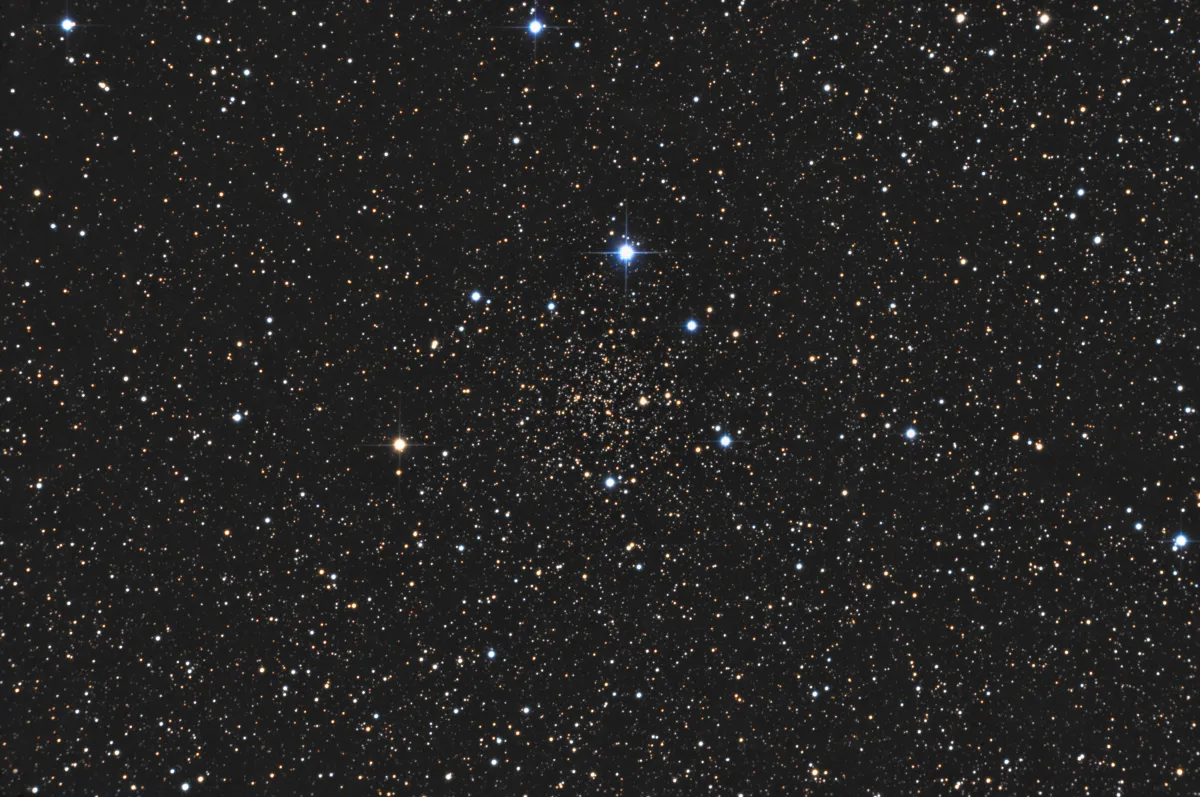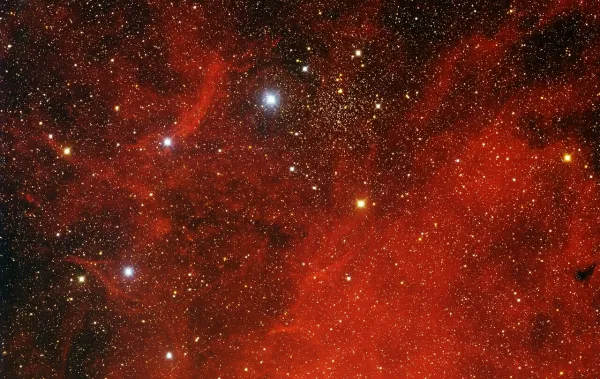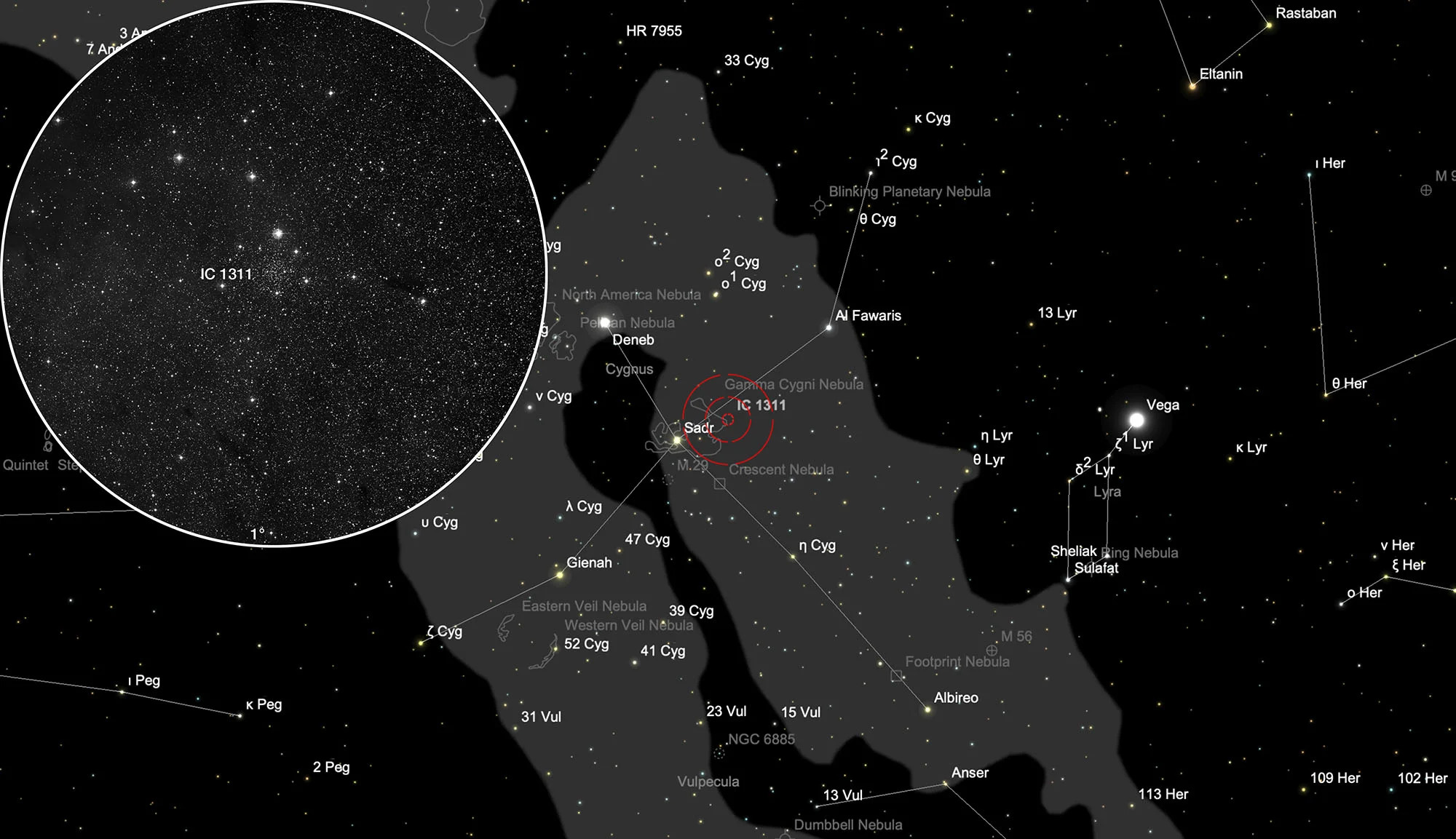Open Cluster IC 1311

History
The open star cluster IC 1311 was discovered on 6 October 1893 by the British astronomer Thomas Espin. He described it as «very faint, in a circle of stars». The astronomer Robert Trümpler, who comes from Switzerland and lives in the USA, classified this star cluster as type II3rn: II = somewhat weaker concentration, 3 = some bright, many weak stars, r = rich (100 ... 500) stars, n = connection with nebula. [196]
Physical Properties

The cluster has around 850 stars and its age is estimated to be around 1.6 billion years. Due to the reddening caused by interstellar gas and dust, the distance information is rather imprecise: They range from 5.8 kpc to 15.8 kpc (18900 to 51'000 light years). [146, 376]
IC 1311 is located on the north-western edge of the large, faintly red glowing Gamma Cygni Nebula (IC 1318), which is stimulated to glow by the strong ultraviolet radiation of massive, hot, blue stars. But probably the star cluster IC 1318 has no connection with this H-II region. If its distance information is correct, it would have to be far in the background. The star Sadr (γ Cygni) is 1'800 light years away. [149]
| Designation | IC 1311 |
| Type | OCL (II3rn) |
| Right Ascension (J2000.0) | 20h 10m 48.0s |
| Declination (J2000.0) | +41° 10' 24" |
| Diameter | 5 arcmin |
| Visual magnitude | 13.1 mag |
| Metric Distance | 5.333 kpc |
| Dreyer Description | eF, within circle of st |
| Identification, Remarks | OCL 173; COU 45; URA 50 |
Finder Chart
The open star cluster IC 1311 is located in the constellation Cygnus. The best observation time is March to December.
Visual Observation
300 mm Aperture: IC 1311 is a very faint open star cluster hidden in a circle of brighter stars. The surrounding pattern of brighter stars is striking and easily recognisable. IC 1311 is invisible in the 21 mm Ethos (57x). It can only be guessed at in the 13 mm Ethos (92x) using indirect vision. You have to know that the cluster is there to believe you can see it. — 300 mm f/4 Popp-Newton, Hasliberg, SQM 20.9, 18. 10. 2025, Bernd Nies
762 mm Aperture: The delicate open star cluster IC 1311 can only be seen with a small magnification or with a Tele Vue Ethos 17 mm eyepiece. A multitude of tiny stars twinkle in a bright circle of stars. They appear much more numerous and denser than the delicate stars in the surrounding star-filled background. — 30" f/3.3 SlipStream Dobsonian, Hasliberg, 18. 10. 2025, SQM-L 21.02, Eduard von Bergen
